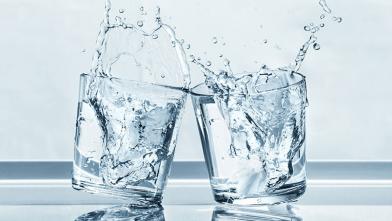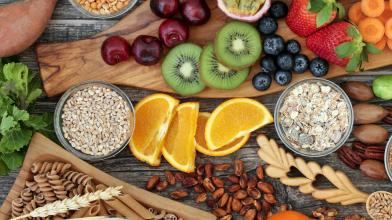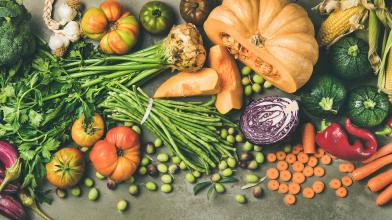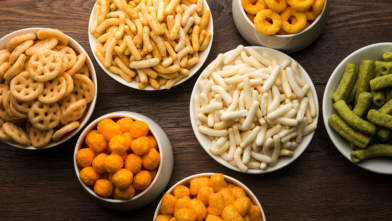Why are people with type 1 or type 2 diabetes more at risk for heart disease?
Over time, high blood glucose can damage the blood vessels, putting people with type 1 or type 2 diabetes at a higher risk for atherosclerosis, or “hardening of the arteries.”
Atherosclerosis also causes high blood pressure raising the risk for heart attacks, strokes, and other cardiovascular diseases.
Keeping blood glucose in the target range through self-care tasks, such as taking medications, eating balanced meals, and physical activity can prevent this damage to blood vessels and lower your risk of heart disease.
People with diabetes may begin to notice the symptoms of atherosclerosis in their legs or feet. Talk to your doctor if you notice symptoms like leg pain while walking, cold or numb toes, or sores on your legs and feet.
This condition is called peripheral arterial disease (PAD). Doctors diagnose this condition by measuring blood pressure in the ankles and comparing it with a blood pressure measurement taken in the arms.
Is there a way to adopt a heart-healthy eating pattern while enjoying flavorful food?
Healthy eating doesn't mean you have to deprive yourself of food or go hungry. You can start by making small changes to your current eating habits based on your personal goals and preferences.
No single eating pattern is perfect for everyone, but the American Diabetes Association and the American Heart Association offer these recommendations:
Eat consistently. Whether you eat three big meals a day or four to five smaller meals, try to follow roughly the same eating pattern each day. This makes blood glucose management more predictable.
Skipping meals to cut calories can leave you feeling overly hungry and cause hypoglycemia, or dangerously low blood sugars. Being overly hungry can also lead to overeating later.
Go lean! Protein helps you feel fuller and doesn’t raise blood sugar as much as carbohydrates. But, high fat animal proteins, particularly red meat, tend to be higher in saturated fat, which can increase your risk of heart disease.
Choose lean proteins like chicken or fish, and include more plant-based proteins like beans and tofu in your meal plan.
- Go fish! In addition to being a good source of protein, fatty fish like salmon, albacore tuna, trout, and sardines are high in omega-3 fatty acids which are good for heart and brain health. Try to eat 1-2 servings of fish each week.
- Go nuts! Unsalted nuts are a great plant-based source of fiber, protein and unsaturated fats. But, they are very calorie dense, so stick to a small one ounce serving, about a palmful.
- Check labels. When you're at the store, read the nutrition labels and cut back on foods that are high in saturated fats, sodium and added sugars. Also avoid foods with trans fats.
Look for canned or other packaged foods that are “low sodium,” “reduced sodium,” or “no-salt-added.” If you want to know how to understand all the nutrients and ingredients on those labels, read Making Sense of Food Labels.
- Check your oil. Plant-based oils like olive, peanut, safflower or corn oils are higher in unsaturated fats and are considered heart healthy.
Oils that are solid at room temperature like butter, lard and coconut oil tend to be highest in saturated fat and should be used sparingly.
- Use spices and herbs instead of salt to add zestful flavor to your foods. Having too much sodium in your bloodstream pulls water into your blood vessels. This reaction to sodium increases blood pressure.
Limit your sodium intake to no more than 2,300 milligrams per day. If you have high blood pressure, your health care team may recommend aiming for 1,500 mg per day to lower your blood pressure even further.
- When choosing grains, look for minimally processed whole grains such as brown rice, quinoa, oats, barley, etc.
Whole grains are higher in dietary fiber which improves your cholesterol levels. They also help you feel fuller which can help with weight management.
- Veggies are powerhouses of good nutrition, and vegetable-rich diets can lower blood pressure. People with type 1 or type 2 diabetes should choose non-starchy vegetables like green beans, asparagus, peppers, tomatoes, and sprouts.
- If you want to keep better track of what you’re eating, keeping a food journal may be helpful. You could use an app, like My Fitness Pal, or simple pen and paper to track what you eat throughout the day. You can even use your phone camera to snap photos of your meals and snacks.
Talk over your food record with a dietitian or diabetes care and education specialist to see what you can improve and set small goals.
- Don’t go overboard with alcohol. You may have heard that red wine is good for your heart, but drinking too much alcohol can increase blood pressure and raise your LDL cholesterol.
Plus, you may be at higher risk of hypoglycemia (low blood glucose) while you are drinking, especially if you sue insulin or glucose-lowering medicines.
If you drink, stick with no more than one drink per day for women, or two drinks per day for men. (“one drink” equals 12 ounces of beer, 5 ounces of wine, or 1 ½ ounces of liquor)
Most of all, we recommend working with a registered dietitian (RD/RDN) or diabetes care and education specialist (DCE/CDCES) to determine what food and lifestyle changes can work for you to meet your health goals.
Remember, there is no “diabetes diet!” You can learn to manage blood glucose in a way that fits your lifestyle and preferences to prevent heart disease and other complications.
Looking for delicious, easy-to-prepare recipes? Check our round up of heart-healthy recipes that are low in sodium and packed with healthy fats, whole grains, and nutritious vegetables!
Join the Know Diabetes by Heart Initiative
Empower yourself with more facts and resources about the connection between diabetes and heart disease. When you join the Know Diabetes by Heart™ initiative, you'll receive a monthly newsletter filled with science-backed tips and tools for people living with type 2 diabetes. Remember, Knowledge is power, and the more you have, the more you may decrease heart disease risk related to diabetes.














